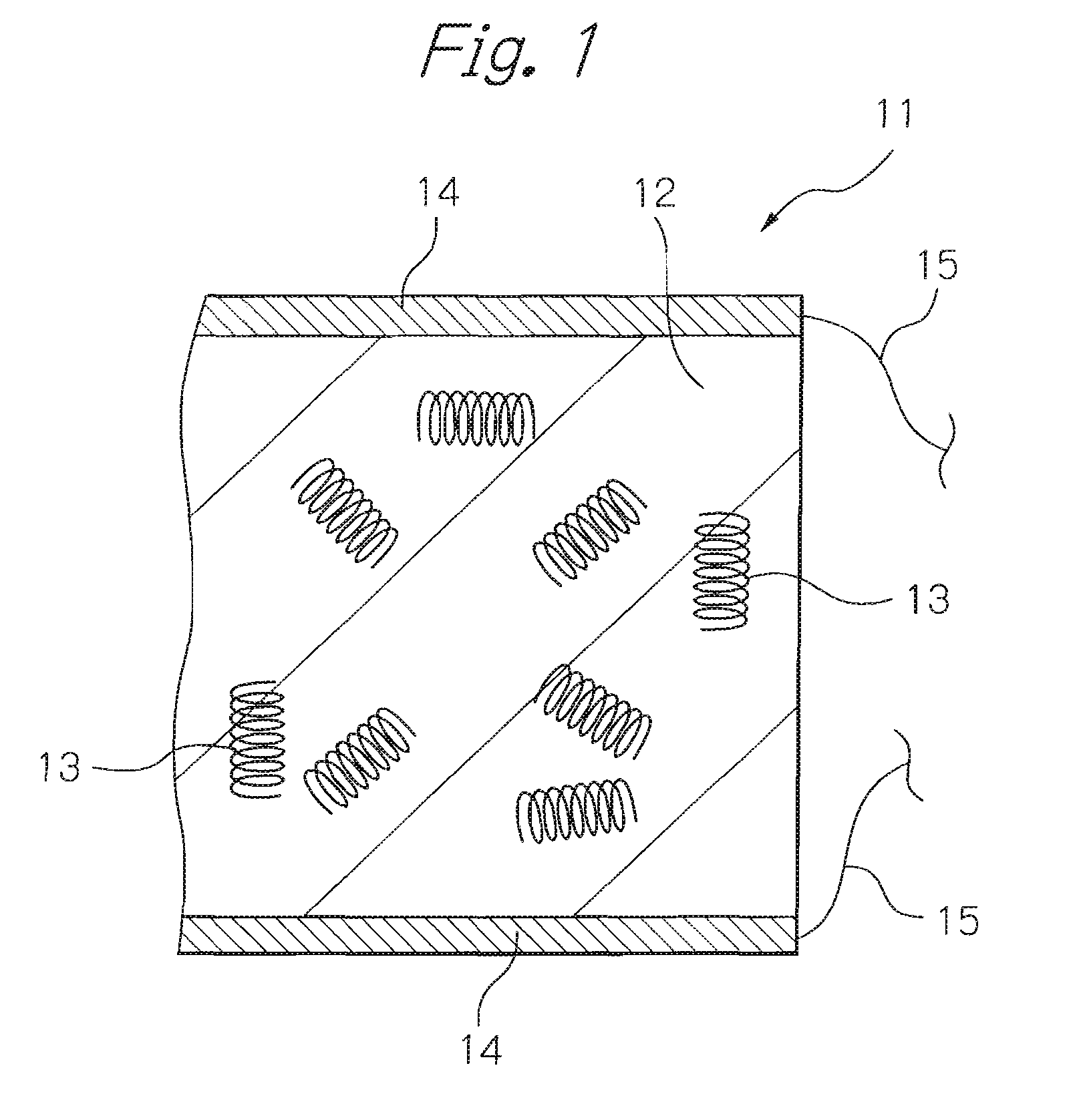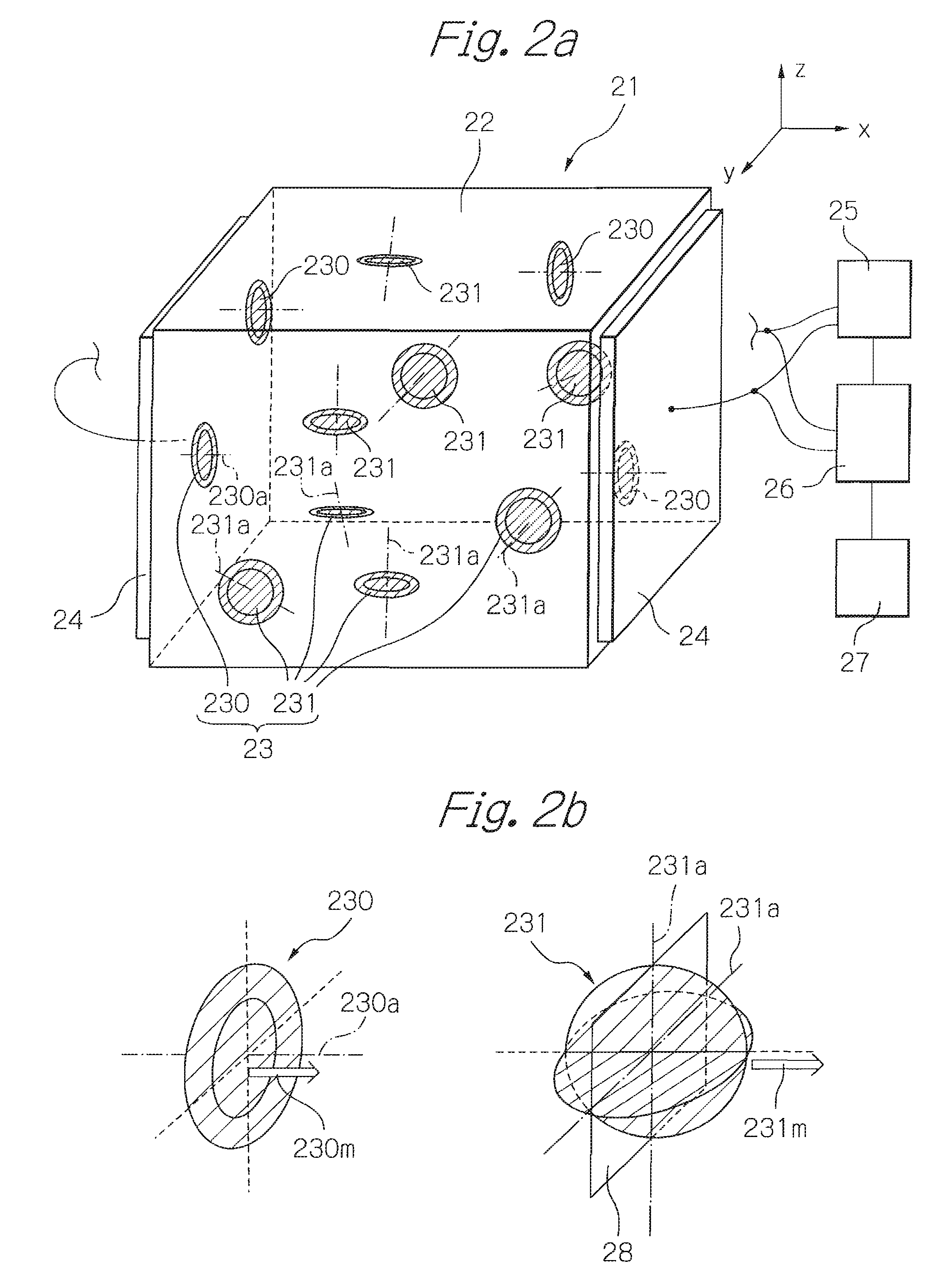Tactile sensor utilizing microcoils with spiral shape
- Summary
- Abstract
- Description
- Claims
- Application Information
AI Technical Summary
Benefits of technology
Problems solved by technology
Method used
Image
Examples
Embodiment Construction
[0043]FIG. 2a shows a perspective view schematically illustrating the structure of one embodiment of the tactile sensor according to the present invention. And FIG. 2b shows schematic views for explaining the coil axis and the direction of magnetization in a micro coil. In these figures, x-, y-, and z-axis, which are orthogonal with one another, are defined in order to clarify directions.
[0044]As shown in FIG. 2a, a tactile sensor 21 includes: a medium 22 of rectangular solid; a plurality of micro coils 23 dispersed in the medium 22; and a pair of electrodes 24 provided respectively on both side surfaces opposed to each other along the x-axis of the medium 22. Here, the medium 22 with the dispersed micro coils 23 is considered as a tactile-sensitive material, or as a tactile-sense part formed of the material. In FIG. 2a, the number of the micro coils is extremely less than the real one, for viewability.
[0045]The medium 22 has certain elasticity, and certain conductivity lower than t...
PUM
| Property | Measurement | Unit |
|---|---|---|
| Ratio | aaaaa | aaaaa |
| Sensitivity | aaaaa | aaaaa |
| Magnetization | aaaaa | aaaaa |
Abstract
Description
Claims
Application Information
 Login to View More
Login to View More - R&D
- Intellectual Property
- Life Sciences
- Materials
- Tech Scout
- Unparalleled Data Quality
- Higher Quality Content
- 60% Fewer Hallucinations
Browse by: Latest US Patents, China's latest patents, Technical Efficacy Thesaurus, Application Domain, Technology Topic, Popular Technical Reports.
© 2025 PatSnap. All rights reserved.Legal|Privacy policy|Modern Slavery Act Transparency Statement|Sitemap|About US| Contact US: help@patsnap.com



